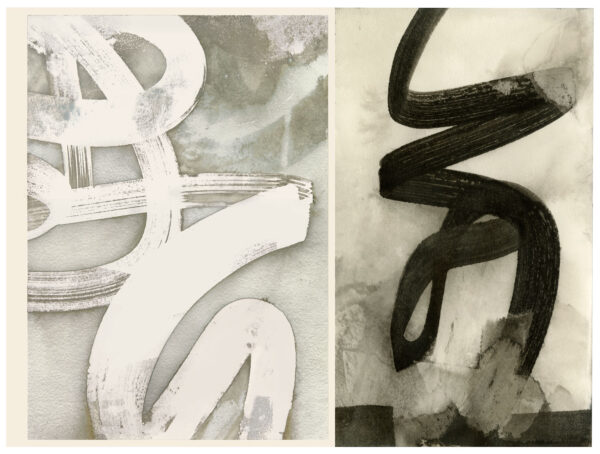
Duo (Yes/And), one of the new minimalist prints just off the press and in my shop.
It was great to see old friends and new at the opening of Intersect at SAM Gallery. Thank you to all who came to the opening and also those who have gone at other times and sent me your lovely notes! The show continues Wednesday through Sunday 10-5 through the end of the day Sunday August 27.
The opportunity to talk about my work and explain my process at the gallery gave me a lot to think about. These last quiet days of August are a good time to reflect on what led me to work in this medium and to explain my “rules” for making the work. Also (in case you haven’t noticed!) Artificial Intelligence is making a lot of noise in the room and any artist, particularly an artist using digital technology, has to address the questions it raises.
Evolution of a Digital Printmaker
When it comes to computers, I began my journey as The Last Luddite, kicking and screaming at the intervention of design programs into illustration and the typographic arts. As it became apparent that no professional designer could survive the transition and remain completely analog I embraced Photoshop and other programs as tools, but continued to make the basic ingredients of my work in design by hand. The catch here has always been the blurry line between using a tool and being used by it. My rule as a professional lettering artist, and now as a fine artist who incorporates digital tools in my work, is to use the best tool for the job, rather than grabbing something because it is handy and fast and baked into “digital workflow.”

Source (The Wave Revisited) 42 x 32 ” framed, at SAM Gallery, a piece made using one of my favorite mark-making tools, long pieces of balsa wood and watercolor on paper.
What software does brilliantly is visualization, design and assembly. What led me to turning to the computer originally was the attempt to add color to fragile drawings done with charcoal dust. In working with delicate media the risk to the original is acute – every method I tried destroyed the drawings. In the process of digitally testing color ideas over scanned originals I realized I had the potential for magic, and a new kind of printmaking. Although I also paint, printmaking has always shaped my methods and my aesthetic. I love the idea of building images through plates, layering veils of ink and imagery to create effects that can only be made indirectly. I love the mark that is mysterious, clearly not possible to create without an intervention of pressure or the physical transfer from one surface to another.
It took many years to master the translation from hand-made marks, to the digital laboratory, to printing on fine rag paper, where the work lives as a limited edition print. With the exception of a few botanical cards reproducing small works on Venetian plaster, none of my prints are reproductions of paintings; if I make a painting it’s a painting, and there is no reason to make a print of it. My reason to make a print from something is to change it, to enter a process of alchemy and to be surprised. This is why all the original elements used to build the abstract work are created in black and white. The colorless image is like a zinc matrix, a plate, waiting to be inked in color. Through software I add color and layer the plates. The process is entirely improvisational, and I do not know what it will look like until many hours, days, or sometimes months later.
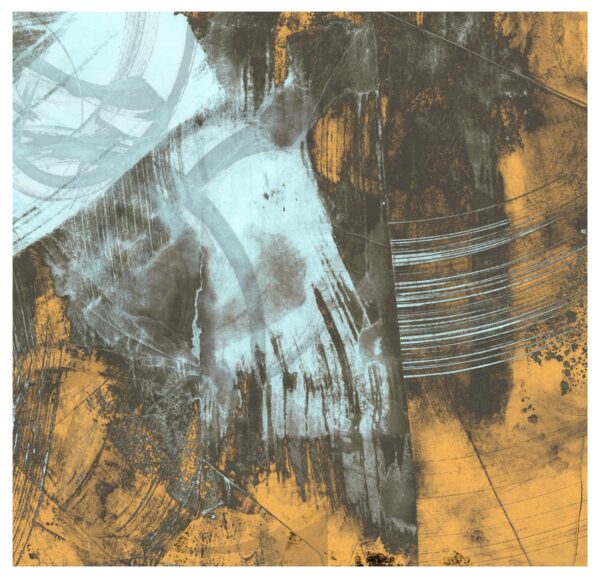
Experimental work using ink-painted rice paper folded, spindled and crushed with a brayer and scanned. I used the scanner to capture both sides of the paper including the ghost image on the reverse side, and then went wild with color ideas.
Machine Learning versus Being Human
This process could not be farther away from machine learning, the goal of which is “to allow software applications to become more accurate at predicting outcomes without being explicitly programmed to do so. Machine learning algorithms use historical data as input to predict new output values.” (Search Google for “tech accelerator” to learn more.)
Anyone tempted by the seductions of AI needs to think long and hard about where the ingredients of AI art come from: the harvest of “historical data” (original art!) created by human beings throughout history. Every image ever uploaded to the world wide web is being combed and analyzed 24/24 so it can be cloned and reassembled to resemble “what art looks like.” Human beings themselves are the tool being used by the software. Our memories, motivations, emotions, skills and creations are all being “sourced” and repackaged as product. It is more than disconcerting when every time I go to LinkedIn to post my work it prompts me to use ChatGPT to create my offering. The world’s premier network for finding a job is on board to help me replace myself with an algorithm. I do not want to be used as a tool to make artificial intelligence smarter, I want to become a smarter human. I have more to say on this and will be posting longer pieces about AI, ethics and authenticity on my blog. In the meantime . . .
New Work Inspired by Edo Avant Garde
This all makes me want to return immediately to another century, perhaps again to the Edo Period in Japanese art. I am fascinated by the format of the scroll, and the complex composition process of sequence and interruption, reading the tea leaves right to left. These two recent pieces are designed to think about walls, and about contemplative states of reflection. The Edo series is inspired by the extraordinary film Edo Avant Garde that I watched on my laptop during the snow in the first year of pandemic.
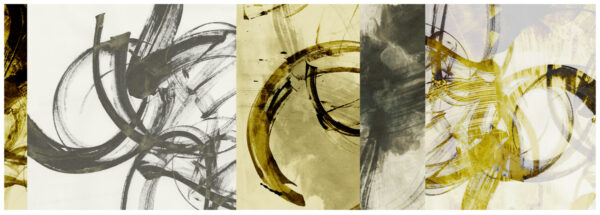
Edo Contemplation No.6, size variable to 80 inches long.
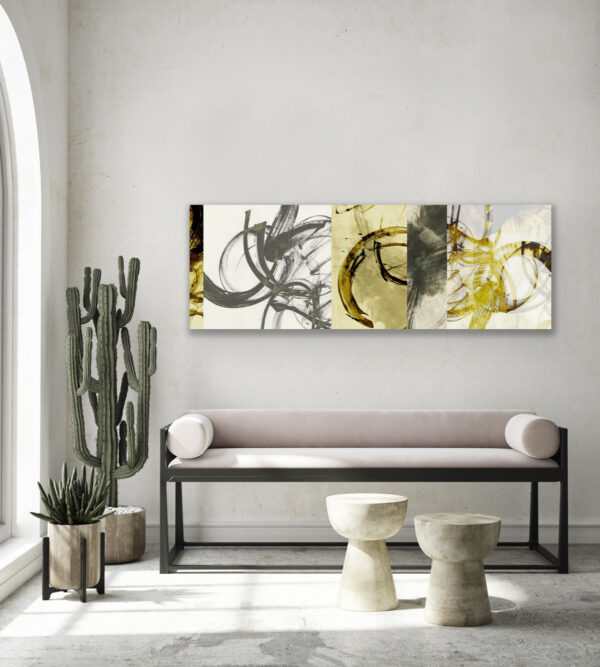
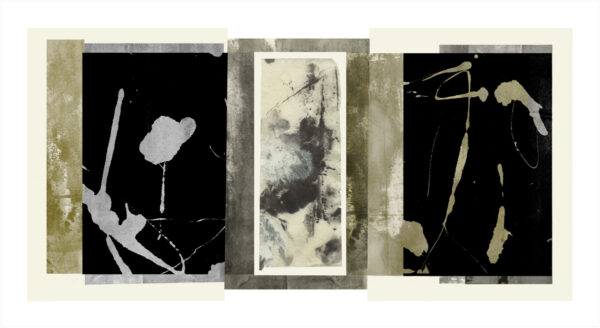
Every Day Sutra, size variable

Edo Variation…the combinations of elements offer endless possibilities, making this way of working ideal for designing for spaces with different moods and size constraints.
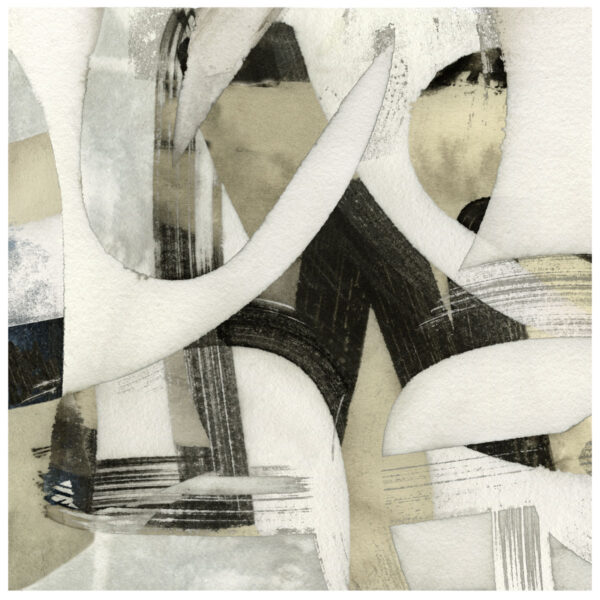
Puzzle Piece (Harlequin’s Puzzle), a new piece completed this week, available in my shop. This print was composed from ink washes on paper, reconfigured to explore pattern and interruption. It can be printed up to 20 inches square.
To launch us out of the dog days of August and into fall I am offering a 20% off sale on all shop items with a total purchase of $150, today through September 30th. If there is something you’ve been thinking about for awhile, now might be the time! All you have to do is subscribe to my newsletter.
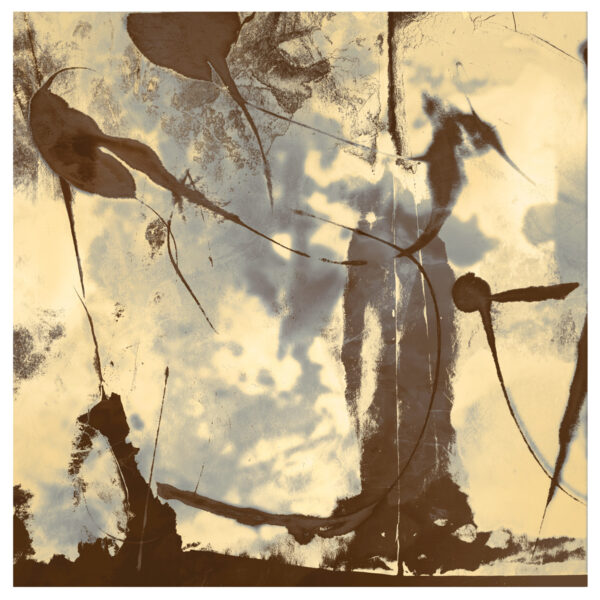
I’ll leave you with this last image from my recent explorations: The Courtesan (Basho’s Lost Lover), available in 24 x 24″ on SaatchiArt or direct from my studio, (not yet a shop listing, smaller size available there soon.) Minimalism in the service of August light – it doesn’t take a lot of color to tell the last of summer’s story.
Leave a Reply